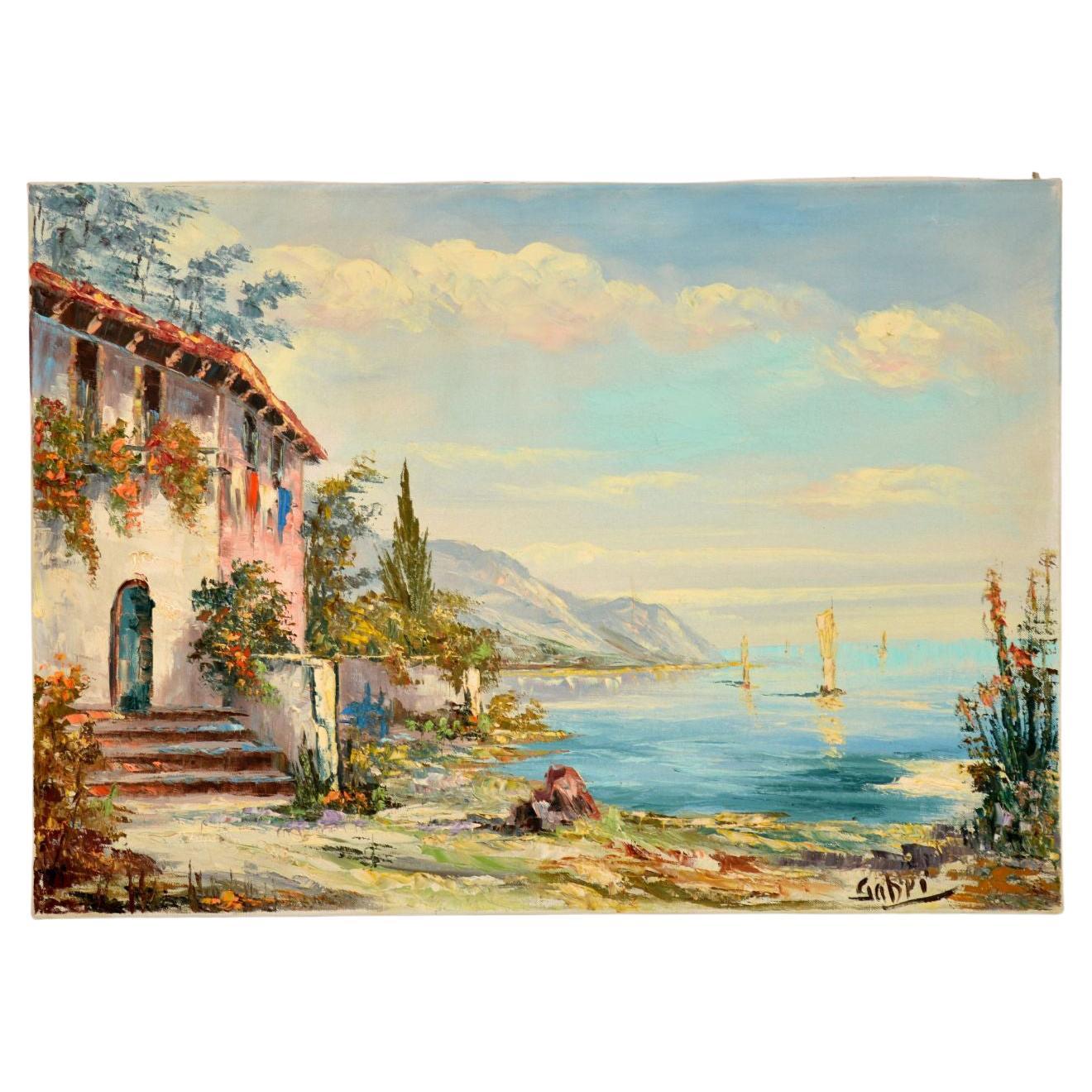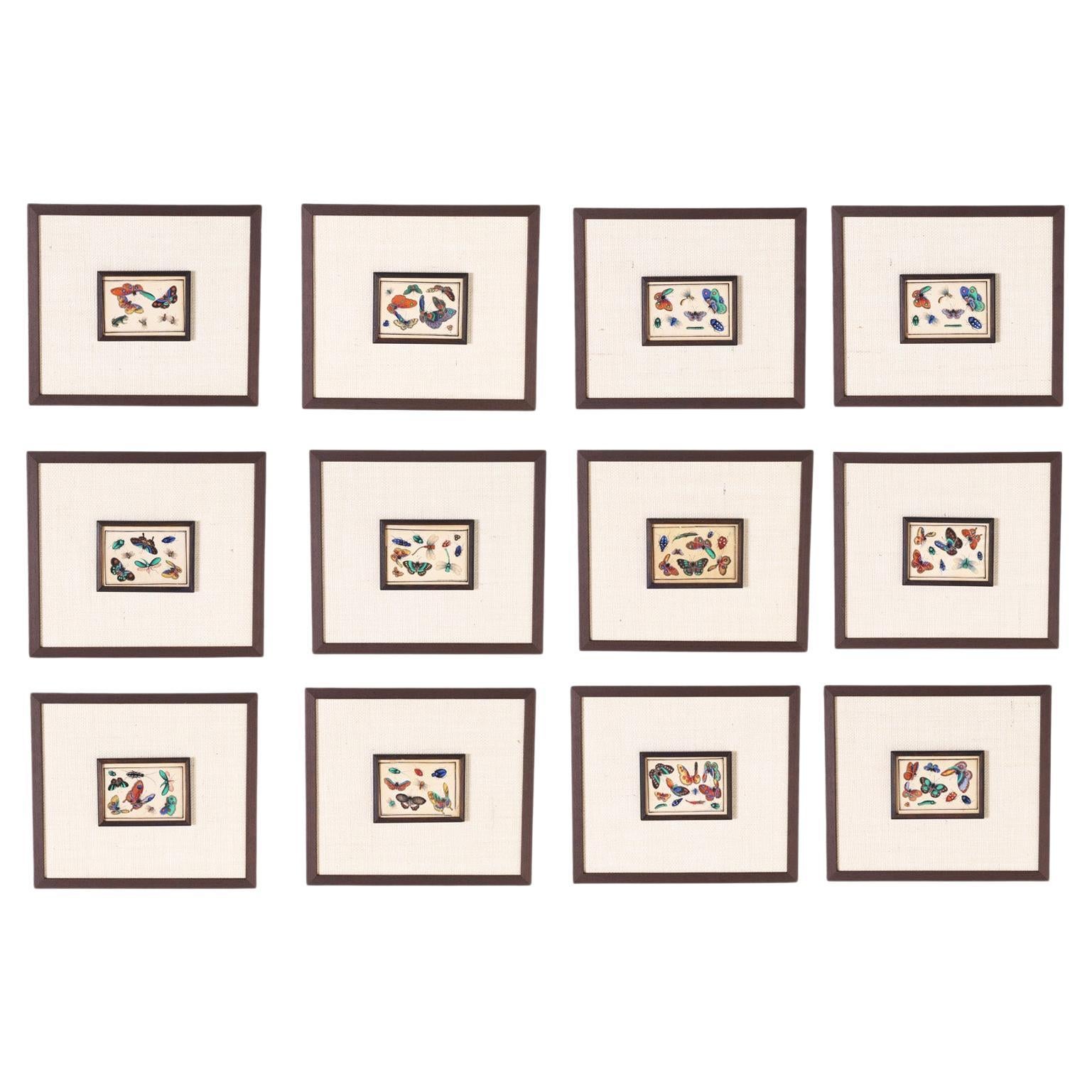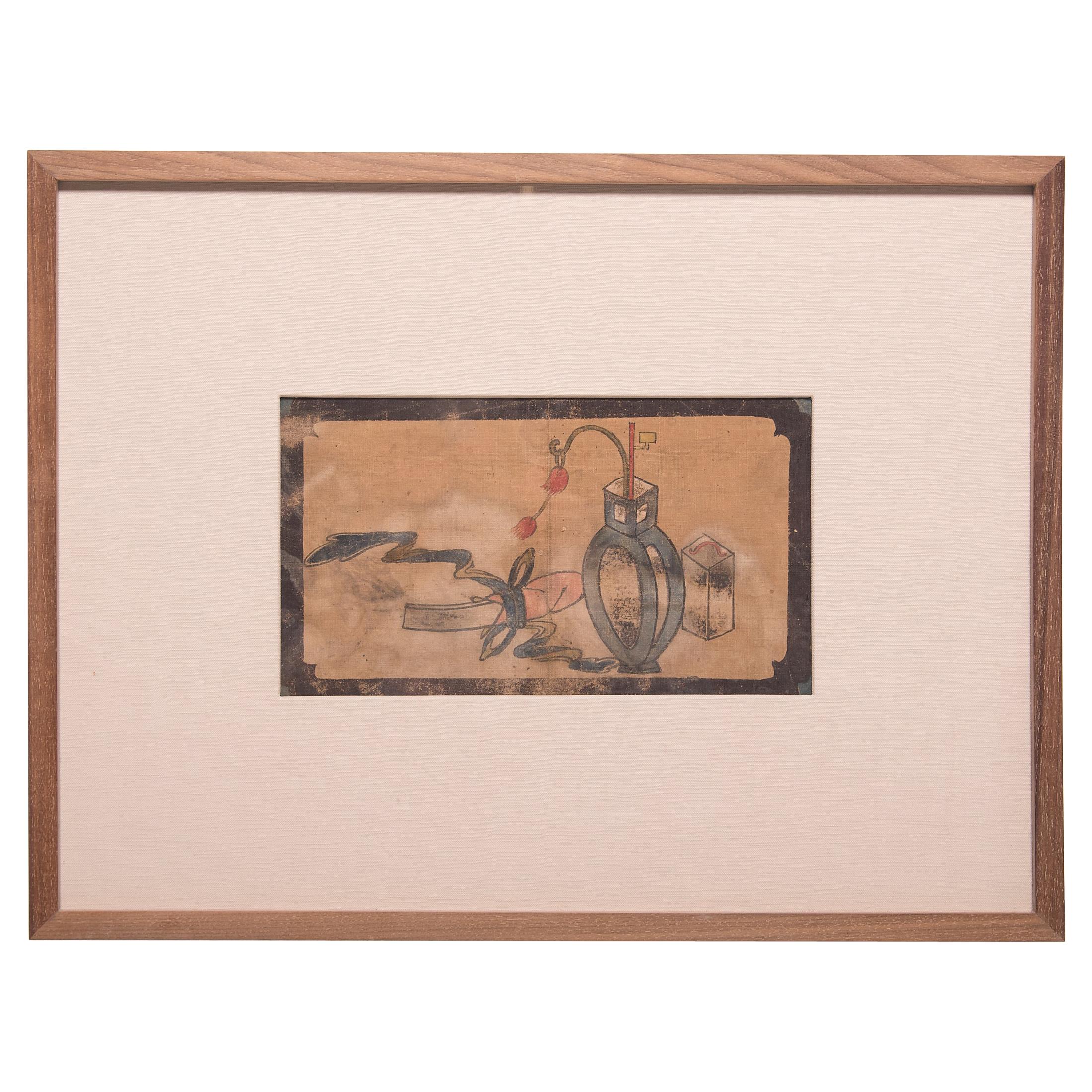Items Similar to Shibata Zeshin ‘1807-1891’, Barley
Want more images or videos?
Request additional images or videos from the seller
1 of 5
Shibata Zeshin ‘1807-1891’, Barley
About the Item
Medium: Hanging scroll; ink and pigments on silk
Signature: Zeshin
Seal: Tairyukyo
Date: circa 1880
Painting size: 98 x 20 cm
Mounts size: 182 x 32 cm
Shibata Zeshin was an artist and artisan of superior skill and diversity. He worked as a painter, printmaker and lacquerer.
From age sixteen Zeshin studied painting with Suzuki Nanrei, a pupil of Maruyama Okyo, who is celebrated for combining elements of Western naturalism with traditional East Asian brushwork. After nine years with Nanrei, Zeshin moved to Kyoto and spent a further two years with another of Nanrei’s teachers, Okamoto Toyohiko; he would paint in his own version of the Maruyama style for the rest of his life.
Zeshin often presented himself as a guardian of old-time cultural norms, but he also participated enthusiastically in the transformation of artistic life that followed the Meiji Restoration.
- Dimensions:Height: 71.66 in (182 cm)Width: 12.6 in (32 cm)Depth: 0.4 in (1 cm)
- Materials and Techniques:
- Place of Origin:
- Period:
- Date of Manufacture:circa 1850
- Condition:
- Seller Location:Milano, IT
- Reference Number:1stDibs: LU4250216229042
About the Seller
5.0
Recognized Seller
These prestigious sellers are industry leaders and represent the highest echelon for item quality and design.
Established in 2005
1stDibs seller since 2018
10 sales on 1stDibs
Typical response time: 1 hour
- ShippingRetrieving quote...Ships From: Milano, Italy
- Return PolicyA return for this item may be initiated within 7 days of delivery.
More From This SellerView All
- Painting by Maeda Josaku (Japan, 1926 – 2007), Paysage Humain N° 14, 1960Located in Milano, ITSigned: Josaku Meda. 60. Singed on the back: "Paysage humain" N°14 / 7.1960 / Josaku MAEDA / à Paris Exhibitions: Turin (Italy), Gissi Gallery, Collettiv...Category
20th Century Japanese Paintings and Screens
MaterialsCanvas
- Hanging Scroll by Kamisaka Sekka, JapanLocated in Milano, ITThis painting represents a man waiting under a dark tree. The composition is extremely simple but suggestive. The artist, with few elements, can, in fact, create a vivid and dynamic scene, based on the tension between the strong ink stain that renders the tree and the elegant figure of the man, dressed in an aristocratic robe. Painter and designer, Kamisaka Sekka...Category
Early 20th Century Japanese Paintings and Screens
MaterialsPaper
- Pair of Six-Panel Folding Screens with Peonies and Other FlowersLocated in Milano, ITA pair of six-panel folding screens with peonies and other flowers 19th century Each 72.5 by 241 cm Small and elegant screens with an ideal scene depicting peonies and other flower species...Category
Antique 19th Century Japanese Paintings and Screens
MaterialsPaper
- Pair of Japanese Two-Fold Screens with Flower Arrangements and Rare BirdsLocated in Milano, ITKaramono with flower arrangements and rare birds Edo period, 18th century Pair of two-panel folding screens Ink, colors, gofun and gold leaf on paper Each 170 by 165 cm ...Category
Antique 18th Century Japanese Paintings and Screens
MaterialsPaper
- Pair of Japanese Screens with Flowers of the Four Seasons, 19th CenturyLocated in Milano, ITThis pair of screens belongs to a genre of lyrical paintings of flowers, grasses, and other plants that flourished around the middle of the 17th century and became a specialty of the Sôtatsu studio. The use of a rather complex composition of clusters of flowers and the puddling of ink was initiated by Tawaraya Sôtatsu, the founder of the Rimpa School, who was active from 1600 until 1642. The screens are abstract and decorative but there is, at the same time, a keen sense of naturalism not only in the attention to accurate detail but in the profusion of vegetation. The passage of the year is symbolized by the variety of plants that bloom in different seasons. The tarashikomi - here used on leaves, petals and trunks - is a Classic Rinpa technique in which pale black ink or a color is brushed onto an area of a painting and then either darker ink, or the same or a contrasting color, is dropped into the first before it has completely dried, creating an effect of pooled colors with softly blurred edges. Its delicacy, preciousness, and effeminacy are identified with the over-refinement of its patrons, while the vigor, monochromatic discipline, sharp observation, and virile forms of the Kano school are a testament to the vitality of the rising warrior class. The plants are almost all identifiable: in the summer-spring part, you can find wheat, buttercups, irises, begonias, hydrangeas, coral bells...Category
Antique 19th Century Japanese Paintings and Screens
MaterialsPaper
- Japanese Two-Panel Screen with Scenes at the Pleasure Quarters, 18th CenturyLocated in Milano, ITIn the pleasure districts, the stringent codes were meant to be forgotten. In this painting, some clients are watching from outside the teahouse, while some are entering, one of them...Category
Antique 18th Century Japanese Paintings and Screens
MaterialsPaper
You May Also Like
- Vintage Landscape Impressionist Oil Painting by "Gabri"Located in London, GBA stunning original vintage landscape oil painting on canvass. This is signed by the artist “Gabri”, it dates from around the 1960’s. It is beautifully executed and depicts an abs...Category
Mid-20th Century Paintings
MaterialsPaint
- Original Liberty London 19th Century Chinese Canton Brush Painting WatercolorBy Liberty & Co.Located in GBWe are delighted to offer for sale this very rare original 19th century watercolor brush painting depicting a scene of typical every day Chinese life retailed through Liberty London....Category
Antique 19th Century Chinese Modern Paintings and Screens
MaterialsPaint
- "Scholar's Treasures" Chinese Painting, c. 1850Located in Chicago, ILA scroll and a small lantern depicted in this 19th century painting suggest the romantic notion of a Chinese scholar painting in the evening hours. Re...Category
Antique Mid-19th Century Chinese Qing Paintings and Screens
MaterialsFabric
- Chinese New Year Painting, c. 1900Located in Chicago, ILIn celebration of the lunar New Year festival, it was traditional all over China to hang special decorations. In a city called Wuqiang, local artists made lacquer scroll paintings laden with symbolism. This framed and finely rendered early 20th century folk painting from Wuqiang features an imperial court official and his family dressed in their best silks. The young boy is dressed in a wonderfully patterned yellow robe to offer Shou Xing...Category
Early 20th Century Chinese Qing Paintings and Screens
MaterialsPaper
- "Treasures of the Scholars' Studio" Chinese Painting, c. 1850Located in Chicago, ILWith careful brushwork, this 19th century painting honors the four treasures of the scholar's studio - paper, calligraphy brush, ink, and inkstone. Essenti...Category
Antique Mid-19th Century Chinese Qing Paintings and Screens
MaterialsFabric
- "Literary Gathering" Chinese Scroll Painting, c. 1923Located in Chicago, ILExquisitely painted with delicate line work and a subdued color palette, this Chinese scroll painting is an Late 20th-century reproduction of a...Category
Late 20th Century Chinese Paintings and Screens
MaterialsSilk, Paper
Recently Viewed
View AllMore Ways To Browse
Antique And Artisan
Hanging Scrolls
Hanging Scroll
Traditional Asian Painting
Hanging Screen
Antique Hanging Scroll
Traditional Japanese Painting
Asian Hanging Screen
Painted Silk Scroll
Japanese Screen Kyoto
19th Japan Silk Paint
Asian Painted Scrolls
Antique Japanese Lacquer Screens
Antique Japanese Scroll Painting
Antique Japanese Painting Paintings And Scrolls
Japanese Guardian
Traditional Japanese Art Screens
Japanese Meiji Ink





